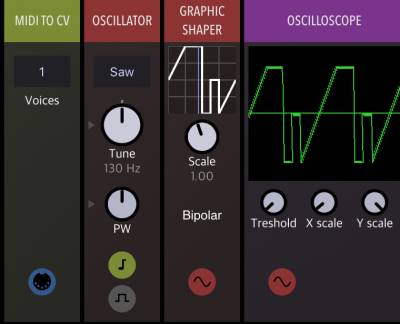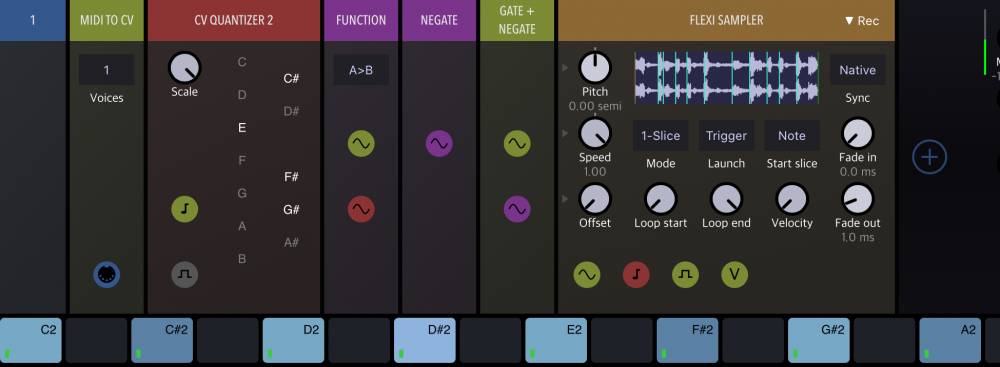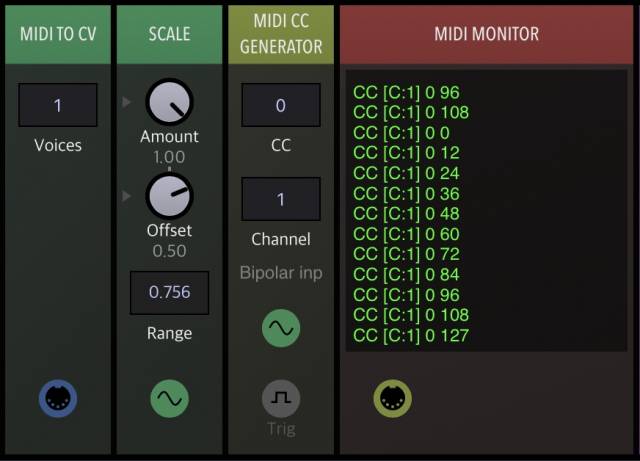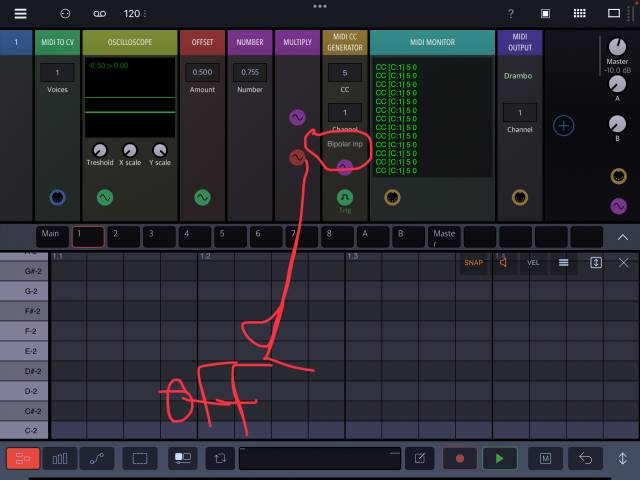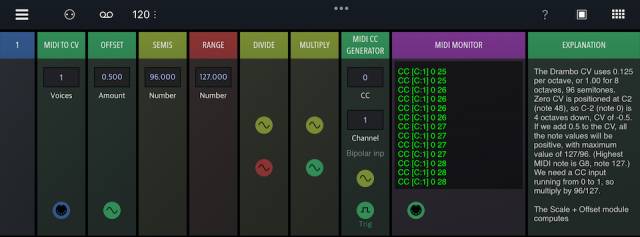The Drambo cookbook
There are many different approaches to writing a cookbook and there's no right or wrong as long as the provided content ends up being helpful for the reader.
This page is work in progress and everyone who thinks can provide something useful for Drambo users, feel very welcome to add to this page!
Let's start with practical examples grouped by module classes.
Sound generators
A simple custom waveform oscillator
Using a Sawtooth Oscillator module followed by a Graphic Shaper module, you can easily create an oscillator that generates virtually any thinkable cyclic waveform. The sawtooth waveform will “scan” the Graphic Shaper X axis in a linear fashion and whatever you draw in the graphical editing area of the Graphic Shaper, will appear as a waveform at the module's output. Important note: Make sure you turn off anti-aliasing in the sawtooth oscillator (tap the Osc. module header and find that setting).
Filters
.
Envelopes
.
Signal processors
.
Math and Logic modules
Muting loop slices in realtime
(Get the Drambo project from Patchstorage: Muting Flexi slices live) Flexi can trigger different slices from different keyboard notes (pitches). By using the Function, Negate and Add modules, pitch information from the MIDI to CV module is compared with its CV-quantized version. The respective slice is only triggered when the CV quantizer note for that slice is enabled.
MIDI
Sequencing CC Values Using Notes
To sequence values of a CC using notes requires some math to convert CV to the range of values 0-127. Note: As of the current Drambo v2.26 the keyboard and pads don't extend to the full 0-127 range of midi notes. However, the sequencer does cover the full range.
Audiobus Forum member @uncledave provided this explanation of the math:
The Drambo CV uses 0.125 per octave, or 1.00 for 8 octaves, 96 semitones. Zero CV is positioned at C2 (note 48), so C-2 (note 0) is 4 octaves down, CV of -0.5. If we add 0.5 to the CV, all the note values will be positive, with maximum value of 127/96. (Highest MIDI note is G8, note 127.) We need a CC input running from 0 to 1, so multiply by 96/127.
The Scale + Offset module computes
y = Range (Amount * x + Offset)
I set Offset = 0.5, Amount = 1.0, and Range = 96/127 = 0.7559055. The previous example used Range = 1 and Amount = 96/127, so Offset had to be 48/127 = 0.377953. Double tap on the displayed value to enter the precise numbers.
Alternative way to do the same thing from @espiegel123
And from @wim
Sequencer modules
.
Miscellaneous and other modules
.
